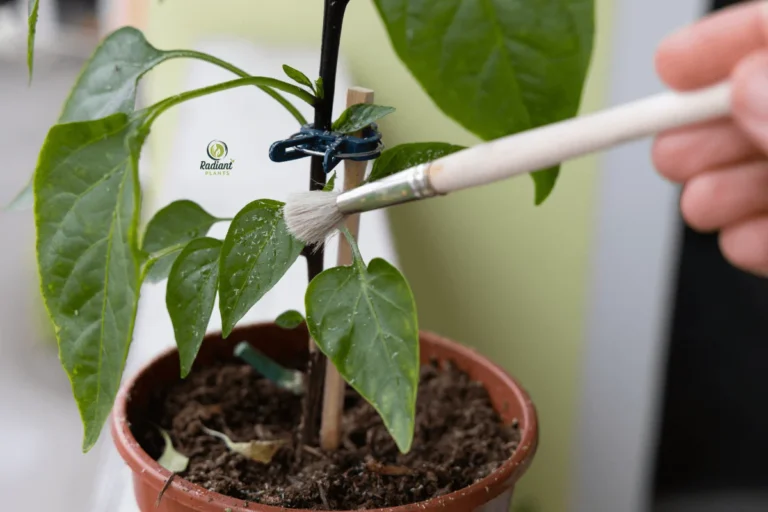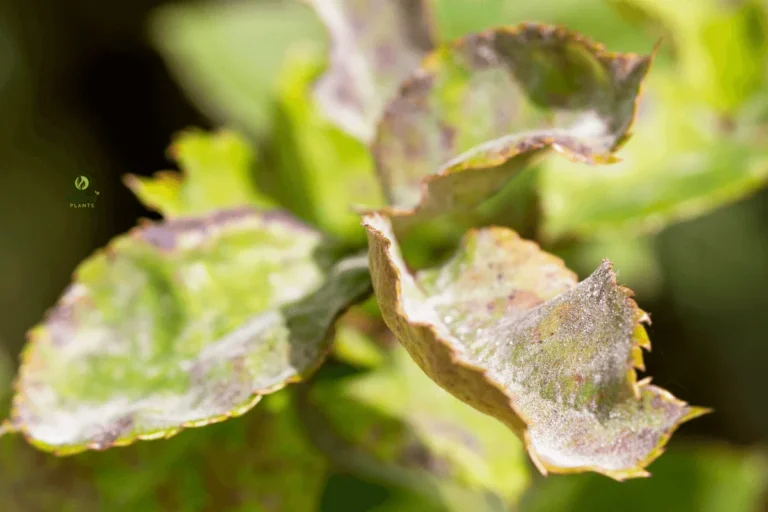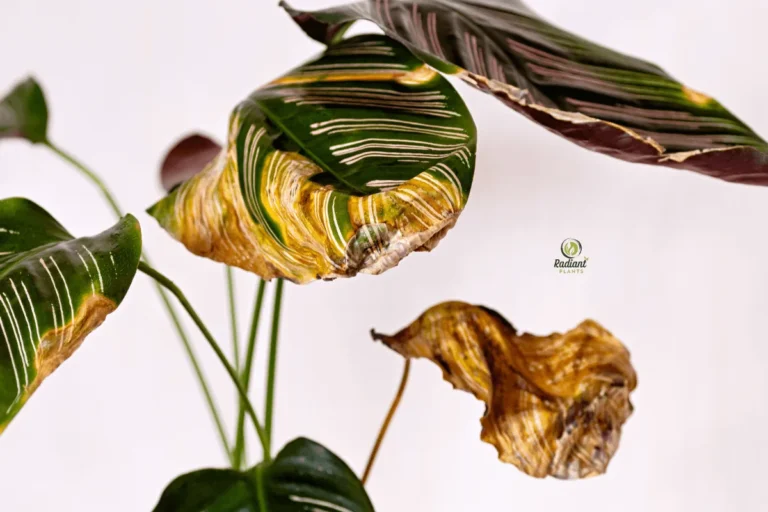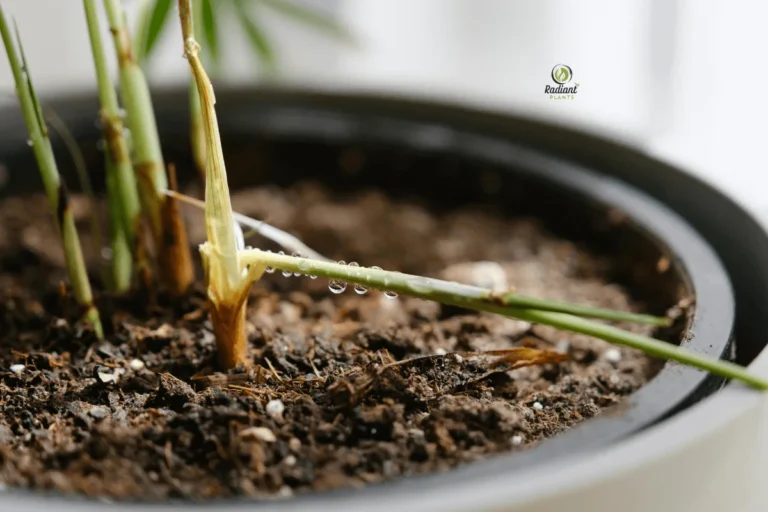Nutrient deficiency in plants: 5 warning signs to watch
Are your houseplants looking sad and unhealthy? You might be dealing with nutrient deficiency in plants. This common problem affects millions of indoor gardeners, but the good news is that it’s fixable once you know what to look for.
When your green friends aren’t getting the right nutrients, they’ll send you clear signals. Think of it like your plants are trying to tell you they’re hungry! Learning to spot these warning signs early can save your beloved houseplants and keep your indoor garden thriving.
Table of Contents
Table of Contents
What is nutrient deficiency in plants, and why does it matter
Nutrient deficiency in plants happens when your green buddies don’t get enough of the essential elements they need to grow strong and healthy. Just like people need vitamins and minerals, plants need specific nutrients to survive and thrive in your home.
Understanding plant nutrition basics
Plants are pretty amazing! They produce their food through photosynthesis, but they still require assistance from us. Think of nutrients as the building blocks that help plants create everything they need – from strong stems to beautiful flowers.
There are three main types of nutrients your houseplants crave:
- Primary nutrients: Nitrogen (N), Phosphorus (P), and Potassium (K) – these are the big three that plants need most
- Secondary nutrients: Calcium, Magnesium, and Sulfur – important but needed in smaller amounts
- Micronutrients: Iron, Manganese, Zinc, and others – tiny amounts that make a huge difference
How nutrient deficiency in plants affects indoor gardening
Indoor plants face unique challenges that outdoor plants don’t have to worry about. Your houseplants live in pots with limited soil, rely on you for water and food, and don’t get natural nutrient cycling from decomposing leaves and organic matter.
When nutrient deficiency in plants strikes your indoor garden, you’ll notice problems pretty quickly. Your plants might stop growing, lose their vibrant color, or even start dropping leaves. It’s like watching your green friends slowly weaken and grow sadder.
The tricky part is that indoor plants can’t tell you exactly what’s wrong. They can’t say, “Hey, I need more nitrogen!” So you have to become a plant detective and learn their language.
Common causes of nutrient problems in houseplants
Why do houseplants develop nutrient deficiencies in the first place? Here are the most common reasons:
Poor soil quality: Cheap potting soil often lacks essential nutrients or has the wrong pH balance. Your plants might be sitting in soil that can’t deliver what they need.
Overwatering or underwatering: Both can prevent roots from absorbing nutrients properly. Too much water drowns the roots, while too little water means nutrients can’t dissolve and move through the plant.
Incorrect Fertilizer: Using the wrong type of plant food or misapplying it can lead to nutrient imbalances. Some fertilizers are too strong, while others don’t have enough of what your specific plants need.
Old potting soil: Soil nutrients get used up over time. If you haven’t refreshed your plant’s soil in years, it might be completely depleted.
Warning Sign #1 – Yellowing and discolored leaves

The most obvious sign of nutrient deficiency in plants is when leaves start changing colors. Yellow, brown, red, or purple leaves are your plant’s way of waving a flag and saying, “Help me!”
Identifying different types of leaf discoloration
Not all yellow leaves mean the same thing. Where the yellowing happens and how it spreads can tell you exactly which nutrient your plant is missing.
Yellowing from bottom up: When older leaves turn yellow first and the problem moves upward, your plant is probably missing mobile nutrients like nitrogen or potassium.
Yellowing between leaf veins: If the leaf veins stay green but the areas between them turn yellow, you’re likely looking at iron or magnesium deficiency.
Yellowing from top down: When new growth turns yellow first, your plant might be missing immobile nutrients like calcium or iron.
Purple or red tinting: Some plants develop purple or reddish colors when they’re missing phosphorus, especially in cooler temperatures.
Which nutrients cause specific color changes
Understanding which nutrients cause which colors can help you solve the mystery of your plant’s health problems:
| Nutrient Deficiency | Leaf Color Changes | Where It Shows First |
|---|---|---|
| Nitrogen | Pale green to yellow | Older, lower leaves |
| Phosphorus | Dark green, purple, or red | Older leaves |
| Potassium | Yellow edges, brown spots | Leaf margins |
| Iron | Yellow with green veins | New growth |
| Magnesium | Yellow between veins | Older leaves |
| Calcium | Brown spots, leaf curl | New growth |
How to distinguish nutrient issues from other problems
Before you assume nutrient deficiency in plants is the culprit, rule out other common problems that can cause similar symptoms:
Watering issues: Both overwatering and underwatering can cause yellowing leaves. Check your soil moisture first.
Light problems: Too much or too little light can stress plants and cause color changes. Make sure your plant is getting the right amount of light for its species.
Pests: Tiny insects like spider mites or aphids can cause leaves to yellow and drop. Look closely for signs of bugs.
Disease: Fungal or bacterial infections can mimic nutrient deficiency symptoms. Check for spots, wilting, or unusual growth patterns.
Warning Sign #2 – Stunted or slow growth patterns

When nutrient deficiency in plants takes hold, growth often slows down or stops completely. Your once-thriving houseplant might seem frozen in time, producing tiny new leaves or no new growth at all.
Normal vs abnormal growth rates in indoor plants
Every plant species grows at its own pace, but you should see some signs of new growth during the growing season (spring and summer for most houseplants). Here’s what normal growth looks like:
Healthy growth signs: New leaves unfurling regularly, stems getting longer, roots growing when you check during repotting, and overall increase in plant size.
Stunted growth signs: No new leaves for months, new growth that’s much smaller than usual, stems that aren’t getting longer, and plants that look the same as they did six months ago.
Key nutrients responsible for plant development
Different nutrients play specific roles in plant growth:
Nitrogen: The growth champion! This nutrient helps plants produce chlorophyll and build proteins. Without enough nitrogen, growth slows way down, and leaves turn pale.
Phosphorus: Essential for root development and energy transfer. Plants lacking phosphorus often have poor root systems and struggle to grow.
Potassium: Helps with water regulation and disease resistance. Plants without enough potassium may grow slowly and be more prone to problems.
Measuring growth to detect deficiency early
Keep track of your plant’s growth to catch nutrient deficiency in plants before it becomes serious:
- Take monthly photos of your plants to compare growth over time
- Measure new leaf size and count new growth points
- Note when your plant last produced new leaves or stems
- Keep a simple plant journal with watering and fertilizing dates
If you notice growth has slowed significantly compared to previous months, it’s time to investigate nutrient levels.
Warning Sign #3 – Leaf drop and premature shedding

Dropping leaves is another major red flag for nutrient deficiency in plants. While some leaf drop is normal, excessive shedding often signals that your plant isn’t getting proper nutrition.
Understanding natural vs stress-induced leaf drop
All plants naturally shed older leaves as part of their life cycle. This is normal and nothing to worry about. However, stress-induced leaf drop is different and usually happens much faster.
Natural leaf drop: Occasional loss of older, lower leaves that have turned yellow gradually over time.
Stress-induced leaf drop: Sudden loss of multiple leaves, dropping of healthy-looking green leaves, or loss of new growth.
Nutrient deficiency in plants causes leaf loss
When plants don’t get enough nutrients, they make tough decisions about where to send their limited resources. They often sacrifice older leaves to keep newer growth alive, leading to increased leaf drop.
Nitrogen deficiency: Causes plants to move nitrogen from older leaves to newer ones, resulting in yellowing and dropping of lower leaves.
Potassium deficiency: Leads to leaf edges turning brown and crispy before the entire leaf drops off.
Magnesium deficiency: Results in yellowing between leaf veins, followed by complete leaf drop if not addressed.
Seasonal factors vs nutritional problems
Don’t panic if your plants drop a few leaves during winter – this is often normal! Many houseplants naturally slow down during shorter, darker days and may shed some leaves.
However, if leaf drop continues into spring and summer, or if it’s excessive (more than a few leaves per week), nutrient deficiency in plants is likely the cause.
Warning Sign #4 – Poor flowering and fruit production

If your flowering houseplants have stopped blooming or your fruit-bearing plants aren’t producing, nutrient deficiency in plants might be the problem.
How nutrients affect blooming cycles
Flowering takes a lot of energy and specific nutrients. When plants don’t have what they need, they skip the flowering phase and focus on basic survival instead.
Phosphorus: Super important for flower development. Without enough phosphorus, plants may produce lots of green growth but no flowers.
Potassium: Helps with flower quality and fruit development. Low potassium can result in small, weak flowers that don’t last long.
Calcium: Essential for cell wall development in flowers and fruits. Deficiency can cause flower buds to drop before opening.
Essential elements for healthy flower development
For your flowering houseplants to bloom beautifully, they need:
- Adequate phosphorus for bud formation
- Sufficient potassium for flower color and longevity
- Proper calcium levels for strong cell walls
- Balanced nitrogen (too much prevents flowering, too little weakens the plant)
- Micronutrients like boron and molybdenum for reproductive processes
Troubleshooting flowering problems in houseplants
If your plants aren’t flowering like they used to:
- Check if they’re getting enough light (most flowering plants need bright, indirect light)
- Review your fertilizing routine – are you using a balanced fertilizer?
- Consider switching to a bloom-booster fertilizer during the flowering season
- Make sure you’re not over-fertilizing with nitrogen, which promotes leaf growth over flowers
Warning Sign #5 – Weak stems and root problems

The final major warning sign of nutrient deficiency in plants is structural weakness. Your plants might develop floppy stems, weak root systems, or an overall fragile appearance.
Signs of structural weakness in plants
Floppy or drooping stems: Healthy plants should have strong, upright stems that can support their leaves and flowers. If stems are constantly drooping despite adequate water, nutrients might be the issue.
Thin, spindly growth: Plants stretching toward light often develop weak, thin stems. But if this happens even with proper lighting, nutrient deficiency could be the cause.
Easy breakage: Stems and branches that break easily when you handle the plant indicate structural weakness.
Root health indicators and nutrient absorption
Your plant’s roots are like its mouth – they need to be healthy to absorb nutrients properly. Signs of root problems include:
- Roots that are brown, mushy, or smell bad
- Very few white, healthy root tips
- Roots that circle the pot without growing outward
- Soil that stays wet for too long because roots aren’t absorbing water
The connection between stem strength and nutrition
Strong stems need specific nutrients:
Calcium: Builds strong cell walls and provides structural support
Potassium: Helps regulate water pressure in cells, keeping stems firm
Silica: Although not always considered essential, silica can strengthen plant cell walls
Balanced nutrition: All nutrients working together create the strongest, healthiest plant structure
A Beginner’s Guide: Nutrient Deficiency
How to diagnose nutrient deficiency in plants accurately
Now that you know the warning signs, let’s talk about how to figure out exactly what your plant needs.
Visual inspection techniques for indoor plants
Start with a thorough visual check of your plant:
Examine leaves carefully: Look at both sides of leaves, check for patterns in discoloration, and note which leaves are affected first.
Check new growth: Compare new leaves to older ones – are they smaller, paler, or differently shaped?
Inspect stems and branches: Look for signs of weakness, unusual colors, or stunted development.
Look at the whole plant: Step back and assess the overall appearance, growth pattern, and symmetry.
Soil testing methods for home gardeners
Testing your soil can give you concrete answers about nutrient levels:
pH test strips: These inexpensive strips tell you if your soil is too acidic or alkaline, which affects nutrient absorption.
Home soil test kits: Available at garden centers, these kits test for major nutrients like nitrogen, phosphorus, and potassium.
Digital soil meters: More expensive but more accurate, these devices can test pH, moisture, and light levels.
Professional soil analysis: For persistent problems, consider sending a soil sample to a lab for comprehensive testing.
When to consult plant care professionals
Sometimes nutrient deficiency in plants is tricky to diagnose on your own. Consider getting professional help if:
- You’ve tried different fertilizers, but problems persist
- Multiple plants are showing similar symptoms
- You’re dealing with expensive or rare plants
- Symptoms don’t match typical nutrient deficiency patterns
Quick fixes for common nutrient deficiencies
Ready to help your plants feel better? Here are some fast solutions for the most common nutrient problems.
Best fertilizers for indoor plant nutrition
| Fertilizer Type | Best For | How Often | Pros | Cons |
|---|---|---|---|---|
| Liquid fertilizer | Quick fixes | Every 2-4 weeks | Fast-acting, easy to control | Needs frequent application |
| Granular fertilizer | Long-term feeding | 2-3 times per year | Slow release, convenient | Mix into the soil |
| Fertilizer spikes | Low-maintenance | Every 2-3 months | Super easy to use | Uneven distribution |
| Organic compost | Soil health | Mix into soil | Improves soil structure | Slow-acting |
Organic vs synthetic nutrient solutions
Organic options: Fish emulsion, compost tea, worm castings, and bone meal provide gentle, slow-release nutrition. These are great for long-term plant health, but they work slowly.
Synthetic options: Chemical fertilizers provide immediate nutrition and precise nutrient ratios. They work fast but need careful application to avoid burning plants.
Best approach: Many plant parents use a combination – organic amendments for soil health and synthetic fertilizers for quick fixes when plants show deficiency symptoms.
Application timing and frequency guidelines
Growing season (spring and summer): Feed plants every 2-4 weeks with diluted liquid fertilizer
Dormant season (fall and winter): Reduce feeding to once every 6-8 weeks or stop completely
Signs to increase feeding: Fast growth, frequent watering, or plants in very bright light
Signs to decrease feeding: Slow growth, cool temperatures, or recently repotted plants
Prevention strategies for healthy houseplants
The best way to handle nutrient deficiency in plants is to prevent it from happening in the first place!
Proper soil selection for nutrient retention
Choose high-quality potting soil that contains:
- Organic matter, like compost or peat moss
- Perlite or vermiculite for drainage
- Slow-release fertilizer is already mixed in
- Appropriate pH for your specific plants
Avoid garden soil for indoor plants – it’s too heavy and may contain pests or diseases.
Watering practices that support nutrient uptake
Water quality matters: Use filtered or distilled water if your tap water is very hard or has high chlorine levels. These chemicals can interfere with nutrient absorption.
Proper watering technique: Water deeply but less frequently. This encourages strong root growth and helps nutrients move through the soil.
Drainage is key: Make sure pots have drainage holes and don’t let plants sit in standing water. Soggy soil prevents roots from absorbing nutrients properly.
Long-term feeding schedules for indoor gardens
Create a simple feeding schedule based on your plants’ needs:
High-maintenance plants (fast growers like pothos, philodendrons): Feed every 2 weeks during the growing season
Medium-maintenance plants (most houseplants): Feed monthly during the growing season
Low-maintenance plants (succulents, snake plants): Feed every 6-8 weeks or less
Seasonal adjustments: Reduce feeding frequency by half during fall and winter when growth slows
Keep a simple calendar or set phone reminders to stay on track with your feeding schedule.
FAQs About Nutrient Deficiency in Plants
How do I know if my plant has a nutrient deficiency in plants or just needs water?
Check the soil moisture first! Stick your finger 1-2 inches into the soil. If it’s dry, water first and wait a few days. If the soil is moist but leaves are still yellow or dropping, you’re probably dealing with nutrient issues.
Can I use regular garden fertilizer for my houseplants?
It’s better to use fertilizer specifically designed for houseplants. Garden fertilizers are often too strong and can burn indoor plant roots. Look for fertilizers labeled for indoor or container plants.
How long does it take to fix nutrient deficiency in plants?
You should see improvement in 2-4 weeks with liquid fertilizers, or 4-8 weeks with slow-release options. New growth will look healthier first, while existing damaged leaves may not recover completely.
Is it possible to over-fertilize houseplants?
Absolutely! Over-fertilizing can cause brown, crispy leaf edges, excessive green growth with no flowers, or even plant death. Always follow package directions and use less rather than more.
What’s the best time of year to start treating nutrient deficiency in plants?
Spring is ideal because plants are entering their active growing season. However, you can treat severe deficiencies any time of year – just use less fertilizer during winter months.
Take Action to Save Your Plants Today!
Don’t let nutrient deficiency in plants steal the joy from your indoor garden! Now that you know the five warning signs to watch for, you can catch problems early and fix them before they become serious.
Start by examining your plants today. Look for yellowing leaves, stunted growth, leaf drop, poor flowering, or weak stems. If you spot any of these signs, it’s time to take action.
Remember, healthy plants are happy plants, and happy plants bring joy to your home every single day. Your green friends are counting on you to notice their signals and give them the nutrition they need to thrive.
Ready to become the plant parent your houseplants deserve? Grab some quality plant fertilizer, check your watering routine, and start giving your plants the love and nutrients they’re craving. Your future self (and your plants) will thank you!








One Comment